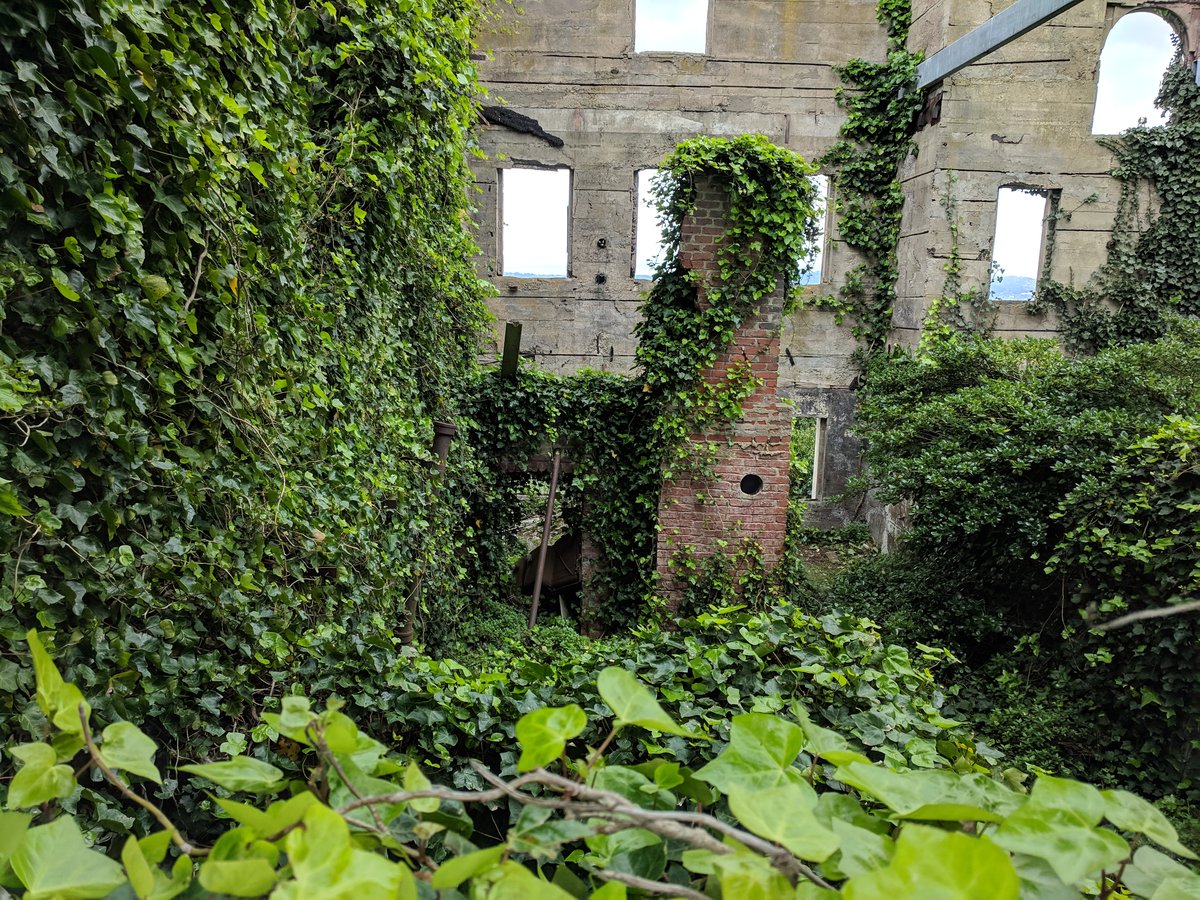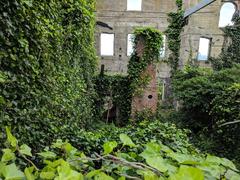
Alcatraz Federal Penitentiary Visiting Guide: San Francisco Historical Site Tickets and Hours
Date: 14/06/2025
Introduction: The Enduring Significance of Alcatraz Island
Alcatraz Island, set in the heart of San Francisco Bay, is renowned not only for its infamous federal penitentiary but also for its layered history spanning Indigenous heritage, military fortification, and pivotal moments in civil rights activism. Originally called “La Isla de los Alcatraces” by the Spanish in 1775 due to its pelican populations, the island’s legacy has evolved from sacred Ohlone ground to a strategic U.S. Army outpost and, ultimately, to the nation’s most formidable prison. The prison’s reputation for being escape-proof has spawned countless tales of daring attempts and has captured the world’s imagination (Gray Line of San Francisco; Britannica; World History Edu).
Beyond its penal history, Alcatraz is a symbol of Indigenous resistance, highlighted by the 1969–1971 occupation that helped ignite a national dialogue on Native American rights. Today, as part of the Golden Gate National Recreation Area, Alcatraz draws over a million visitors annually who come to explore its dramatic past, restored gardens, and stunning bay views (PowWows.com; NPS).
Contents
- Historical Overview
- Indigenous and Spanish Foundations
- Military Fortification and Early Use
- Federal Penitentiary Era (1934–1963)
- Closure and Native American Occupation
- National Park Era
- Cultural Impact and Legacy
- Essential Visitor Information
- Visiting Hours & Tickets
- How to Book & Ferry Logistics
- Accessibility
- Special Tours & Best Times to Visit
- Nearby Attractions
- Visitor Experience Highlights
- Cellhouse & Audio Tour
- Gardens and Wildlife
- Exhibits and Special Programs
- Frequently Asked Questions (FAQ)
- Visuals and Media
- Conclusion & Planning Tips
- Sources
Historical Overview
Indigenous and Spanish Foundations
Long before Alcatraz became synonymous with incarceration, it was a sacred site for the Ohlone people, who saw the island as a place of spiritual importance. In 1775, Spanish explorer Juan Manuel de Ayala charted the bay and named the island for its pelicans (Gray Line of San Francisco).
Military Fortification and Early Use
By 1850, President Millard Fillmore designated Alcatraz as a military reservation due to its strategic location. The first lighthouse on the U.S. West Coast was built here in 1854 (Facts.net). During the Civil War, the island was both a fortress and a prison for Confederate sympathizers and prisoners of war (History Collection).
Federal Penitentiary Era (1934–1963)
Converted to a federal penitentiary in 1934, Alcatraz was designed to house America’s most notorious and escape-prone criminals. Its main cellhouse, built by military prisoners, underwent significant upgrades for maximum security, including reinforced steel bars and electronically controlled doors (Facts.net). Notorious inmates included Al Capone, George “Machine Gun” Kelly, and Robert Stroud, the “Birdman of Alcatraz” (Gray Line of San Francisco). Life was harsh but regimented, with limited privileges, censored communication, and few comforts.
Despite its reputation as “escape-proof,” 14 escape attempts involved 36 inmates, the most famous being the 1962 disappearance of Frank Morris and the Anglin brothers. Their fate remains unknown, adding to Alcatraz’s mystique (Facts.net).
Closure and Native American Occupation
Operational costs and deterioration led to the prison’s closure in 1963. In 1969, Native American activists occupied Alcatraz, invoking treaty rights and launching a 19-month protest that drew attention to Indigenous issues and helped spark a broader civil rights movement (PowWows.com; The Nonviolence Project).
National Park Era
Alcatraz became part of the Golden Gate National Recreation Area in 1972, opening to the public as a historic site managed by the National Park Service (Facts.net). Restoration and interpretive programs ensure its complex stories are preserved for future generations.
Cultural Impact and Legacy
Alcatraz is an enduring symbol of both the American penal system and the fight for Indigenous rights. It has inspired countless films, books, and cultural references (Gray Line of San Francisco), and remains a place of reflection on justice, activism, and resilience. Annual sunrise ceremonies commemorate the Native American occupation, ensuring the island’s role in social justice remains visible (PowWows.com).
Alcatraz is also a haven for wildlife, serving as a bird sanctuary with restored gardens that were first cultivated by military families and inmates (Facts.net).
Essential Visitor Information
Visiting Hours & Tickets
- Hours: Ferries run daily from approximately 8:45 AM to 6:30 PM; night tours are available on select evenings. Check the NPS website or Alcatraz Cruises for up-to-date schedules.
- Tickets: Due to high demand, book tickets 90 days ahead via Alcatraz Cruises, the official provider. Prices start around $45–$55 for adults, with discounts for children and seniors (Alcatraz Tickets).
How to Book & Ferry Logistics
- Where to Depart: All ferries depart from Pier 33 Alcatraz Landing.
- Getting There: Use public transit or rideshare, as parking is limited and expensive.
- Boarding: Arrive at least 30 minutes early with photo ID. E-tickets or printed confirmations are accepted (Alcatraz Tickets).
Accessibility
- Mobility: The island is steep, but the S.E.A.T. Tram provides accessible transport from dock to cellhouse.
- Wheelchair Access: The Cellhouse and key facilities are accessible; call ahead to arrange assistance.
- Restrooms: Accessible at the dock and near the Cellhouse.
Special Tours & Best Times to Visit
- Day Tour: Self-guided audio tour and island exploration (2–3 hours recommended).
- Night Tour: Unique atmosphere, smaller groups, and exclusive programs (What’s Hot Blog).
- Behind-the-Scenes: Small-group access to off-limit areas—book well in advance (Inside Guide to San Francisco Tourism).
- Best Times: Early morning or shoulder seasons (Nov–March) for fewer crowds (San Francisco Jeep Tours).
Nearby Attractions
Combine your visit with Fisherman’s Wharf, Pier 39, Coit Tower, or the San Francisco Maritime National Historical Park for a full day of exploration.
Visitor Experience Highlights
Cellhouse & Audio Tour
The self-guided audio tour, included with admission and available in multiple languages, features dramatic accounts from former inmates and staff, guiding you through cell blocks, solitary confinement, the dining hall, and more (Electric Tour Company). The Cellhouse is fully accessible, and the SEAT tram is available for those with mobility needs.
Gardens and Wildlife
Stroll through the restored gardens and observe nesting seabirds, especially in spring and early summer. Some areas may be seasonally closed to protect wildlife (Alcatraz Experience).
Exhibits and Special Programs
Discover exhibits on the military era, the Native American occupation, and temporary art or history installations (NPS). Ranger-led tours and special talks are offered daily—check the schedule upon arrival.
Frequently Asked Questions (FAQ)
What are Alcatraz visiting hours?
Ferries depart from 8:45 AM, with last returns usually by 6:30 PM. Night tours are available select evenings. Always verify hours on the official website.
How do I buy Alcatraz tickets?
Book online as early as possible through Alcatraz Cruises. Tickets often sell out weeks in advance.
Is Alcatraz accessible for people with disabilities?
Yes, the S.E.A.T. Tram and accessible restrooms are provided. Most major areas, including the Cellhouse, are wheelchair accessible.
Can I bring food or drinks?
Only water is allowed beyond the dock; eating is permitted only in the dock picnic area (SFTourismTips).
How long should I plan for my visit?
Expect to spend 2–3 hours on the island, not including ferry time.
Visuals and Media
Conclusion & Planning Tips
Alcatraz Island is more than a historic prison—it’s a place for reflection on justice, resistance, and the American experience. From the stories of notorious inmates to chapters of Indigenous activism, the island offers a multifaceted journey for every visitor. Book your tickets early through official channels, dress in layers, wear comfortable shoes, and be prepared for a powerful, atmospheric visit.
Download the Audiala app for expert-guided audio tours and up-to-date information. For more on San Francisco’s history and attractions, explore our related guides and follow us for the latest travel tips.
Sources
- Gray Line of San Francisco – 10 Facts About Alcatraz
- Facts.net – 29 Facts About Alcatraz
- PowWows.com – Alcatraz Island: Native American Resistance
- Britannica – Alcatraz Federal Penitentiary
- Roamancing – Alcatraz Island History and Legacy
- Alcatraz Tickets – Island Tickets and Tours
- Alcatraz Cruises – Official Site
- World History Edu – Major Facts About Alcatraz
- The Nonviolence Project – Native American Occupation of Alcatraz
- NPS – Alcatraz Island Visitor Guide
- History Tools – Alcatraz History
- Gray Line of San Francisco – Visiting Alcatraz Guide






































































































































































